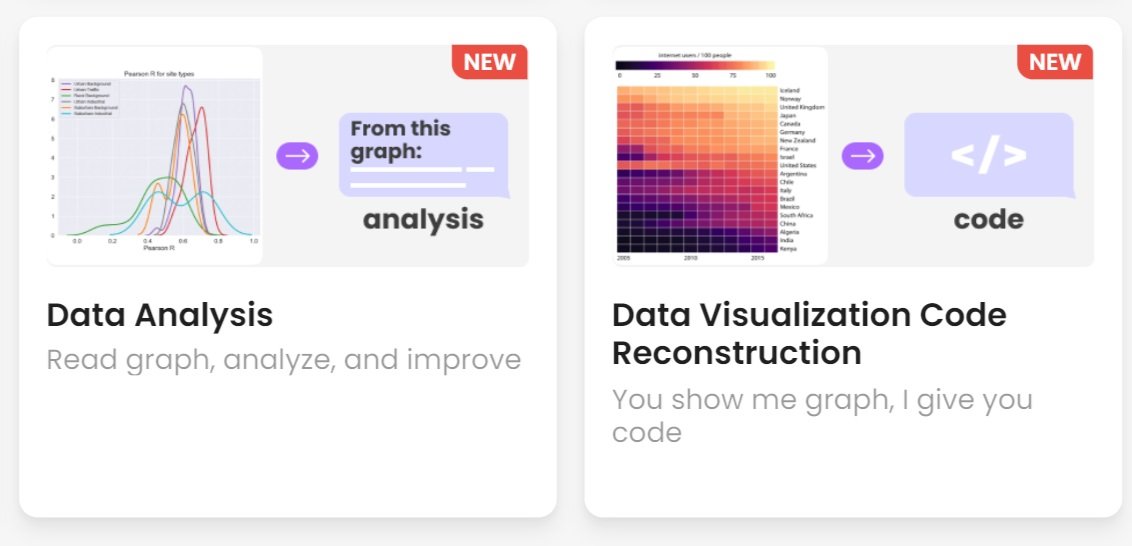In this article, we have compiled a list of frequently asked questions (FAQs) regarding PopAi’s AI image generator, specifically focusing on Data Image and Data Visualization Code Reconstruction. This will help you save time by finding answers here and hopefully assist you in creating satisfactory images and visualizations.
What is PopAi’s AI Image Generator used for?
It is designed to assist users in analyzing data images and reconstructing data visualization code. It can read graphs, analyze data, and generate code from visual data inputs.
How does the Data Image tool work?
The Data Image tool reads the graphical data you upload, analyzes the patterns and data points, and provides insights and improvements based on the analysis.
How does the Data Visualization Code Reconstruction tool function?
The Data Visualization Code Reconstruction tool allows users to upload a graph or a chart, and the tool then generates the corresponding code that can recreate the visualization. This is particularly useful for those who need to reproduce visualizations in different programming environments.
What file formats are supported for upload?
Currently, the tool supports standard image file formats such as PNG, JPEG, and SVG for data images. For the best results, ensure that your images are clear and high resolution.
Can I upload screenshots of graphs?
Yes, you can upload screenshots as long as the graphs are clear and legible. However, for optimal results, it is recommended to upload images in their original format.
What types of graphs can the tool analyze and reconstruct?
The tool can handle a variety of graph types including line charts, bar charts, scatter plots, pie charts, and heatmaps. It is constantly being updated to support more graph types.
Is there a limit to the number of images I can upload?
There is no strict limit, but it is advisable to upload images in batches if you have a large number of them. This helps in managing the load and ensuring accurate analysis.
How accurate is the Data Visualization Code Reconstruction tool?
The accuracy of the reconstructed code largely depends on the clarity and quality of the input image. High-resolution images with clear data points yield the best results.
What programming languages does the tool support for code generation?
Currently, the tool supports code generation for popular languages such as Python (with libraries like Matplotlib and Seaborn), R, and JavaScript (with libraries like D3.js). More languages and libraries are being added regularly.
Can I customize the generated code?
Yes, the generated code is fully customizable. You can modify it to suit your specific needs and integrate it into your existing projects.
How secure is my data when using PopAi’s AI Image Tool?
PopAi takes data privacy seriously. All uploaded images and generated codes are processed securely, and user data is not stored beyond the necessary processing time.
Are there any tutorials available for beginners?
Yes, PopAi provides a range of tutorials and documentation to help beginners get started with the AI Image Tool. These resources cover everything from basic usage to advanced features.
How can I provide feedback or report issues?
You can provide feedback or report any issues through the support section on the PopAi website. The team is always eager to improve the tool and address any user concerns.
Is there a mobile version of the tool?
Currently, the tool is optimized for desktop use, but a mobile version is in development and will be released soon.
How often is the tool updated?
PopAi regularly updates the image generator to include new features, improve existing functionalities, and support additional graph types and programming languages. Users are notified of major updates through the website and email newsletters.
We hope these FAQs help you understand and effectively use PopAi’s AI Image Generator for Data Image and Data Visualization Code Reconstruction. Whether you’re looking to analyze data images or generate code from visual data, this tool is designed to make your tasks easier and more efficient.


